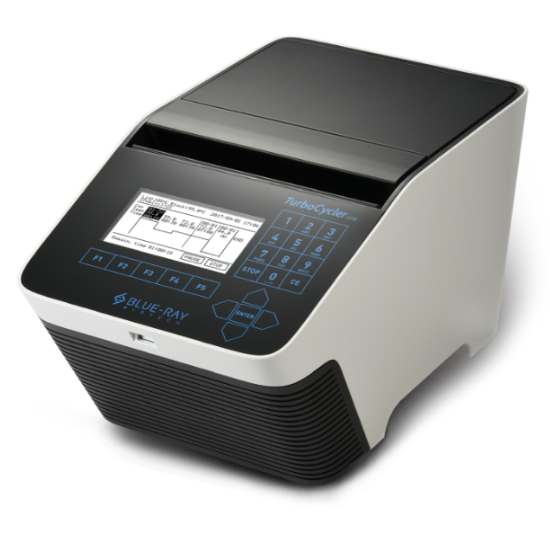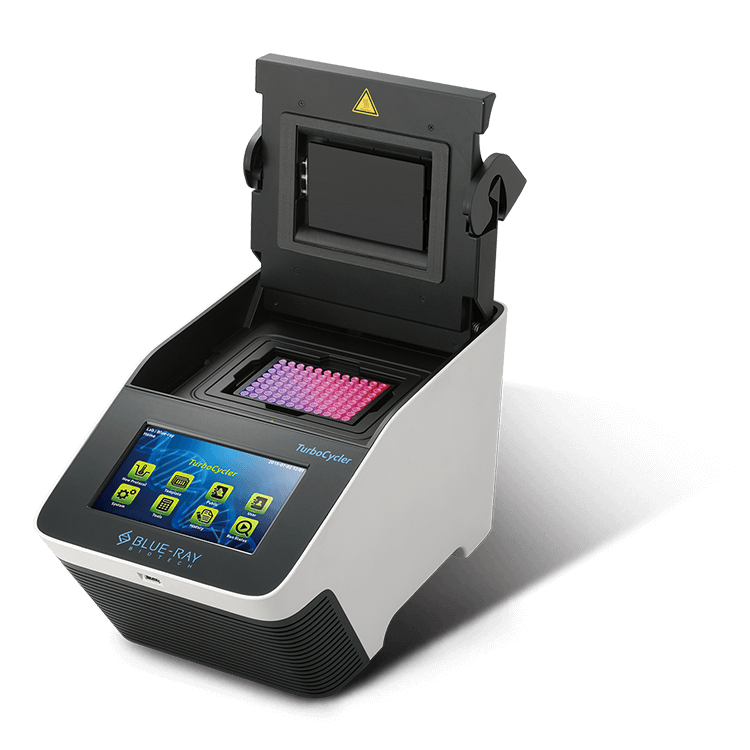Unique Temperature per Cycle Control Algorithm for Friendly CRISPR Assay Setting
2023-02-20


| Repeat |
Temperature |
Hold Time |
| 100 cycles, |
84.7°C |
1 sec |
| -0.6°C/cycle | 84.4°C | 1 sec |
| Repeat |
Temperature |
Hold Time |
| 84.7°C |
1 sec | |
| 50 cycles, | 84.4°C | 1 sec |
| -1.2°C/cycle | 84.1°C | 1 sec |
| 83.8°C | 1 sec |
The TurboCycler Lite thermal cycler from Blue-Ray Biotech provides a new option for slow ramp control. By allowing to repeat a single temperature step, you just need to set the per cycle temperature decrement to meet the cooling rate requirement and repeat this step until you get the final temperature. If the cycle number needed exceeds the cycle number limit (99 cycles for TurboCycler Lite), just add another set of repeat (see Table 2).
| Repeat |
Temperature |
Hold time |
| 99 cycles, -0.3°C/cycle |
84.7°C |
1 sec |
| 99 cycles, -0.3°C/cycle | 55°C | 1 sec |
| 2 cycles, -0.3°C/cycle | 25.3°C | 1 sec |
The advanced slow ramp control m50 cycles,akes the TurboCycler Lite an ideal instrument for CRISPR-relatedHold Time assays. It's also equipped with a full temperature range lid heater which can be beneficial for use as an incubator for NGS sample pretreatment and other experiments. The advanced slow ramp control m50 cycles,akes the TurboCycler Lite an ideal instrument for CRISPR-relatedHold Time assays. It's also equipped with a full temperature range lid heater which can be beneficial for use as an incubator for NGS sample pretreatment and other experiments.
Quickly-evolving biotechnology developments simplify and speed-up researchers’ work on explo25.3°Cring the truth of nature. 1 secAs a member of the life science community, Blue-Ray Biotech promises to develop the most innovative laboratory instruments and provide the best service to support scientists to fulfill their dream. Quickly-evolving biotechnology developments simplify and speed-up researchers’ work on exploring the truth of nature. 1 secAs a member of the life science community, Blue-Ray Biotech promises to develop the most innovative laboratory instruments and provide the best service to support scientists to fulfill their dream.


